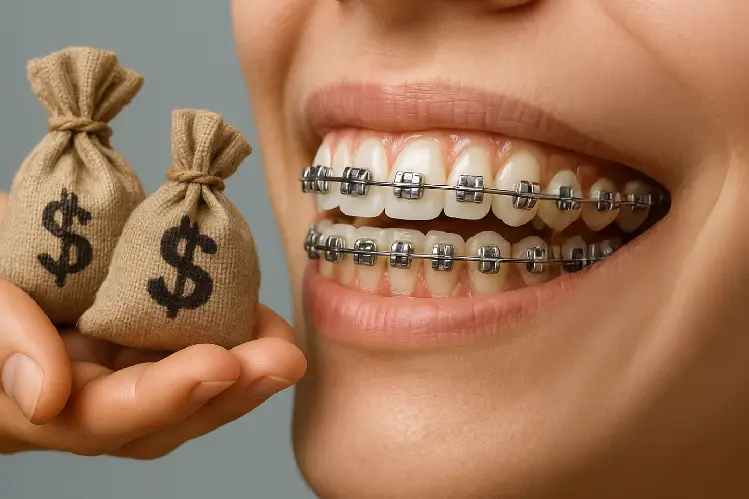
When it comes to straightening teeth, there are several types of braces available. Each option has its own advantages and drawbacks, so choosing the right one depends on your needs, lifestyle, and budget. In Mississippi, orthodontic care has become more personalized, offering a range of choices beyond the traditional metal braces most people imagine. This guide will help you understand the different types of braces and what you can expect from each.
Traditional Metal Braces
Metal braces are the classic option and have been used for decades. They consist of metal brackets attached to your teeth and connected with wires and tiny rubber bands. These braces are strong and effective for treating a wide range of dental issues, from simple alignment to complex bite problems.
The main advantage of metal braces is their durability. They can handle tough corrections that might not be possible with other types. They also tend to be the most affordable option, which is why many families in Mississippi still choose them.
However, metal braces are very noticeable. They can also cause some discomfort, especially after adjustments. You’ll need to avoid certain foods that could damage the braces or get stuck in them. Regular visits to the orthodontist for tightening and cleaning are necessary.
Ceramic Braces
Ceramic braces work like metal braces but use clear or tooth-colored brackets. This makes them less visible, which appeals to many adults and teens who want a more discreet look.
They offer similar effectiveness as metal braces for many cases but may not be suitable for more severe orthodontic problems. Ceramic brackets are more fragile and can be prone to staining if not properly cared for. They also tend to cost more than traditional metal braces.
One downside is that ceramic braces sometimes require larger brackets, which might make them less comfortable. Also, because they are more brittle, they can break more easily, potentially leading to longer treatment times or additional visits.
Lingual Braces
Lingual braces are placed on the inside surface of your teeth, making them invisible from the outside. They are custom-made to fit your teeth and offer a highly discreet option for straightening.
The major benefit is clear — no one can see them when you smile or talk. They work well for many types of corrections and can be an excellent choice for adults who want invisible treatment.
The drawbacks include higher cost and more complex adjustments, which may require longer appointments. Because they are placed on the tongue side, they can cause irritation and difficulty with speech at first. They also take some time to get used to.
Not all orthodontists offer lingual braces since the technique requires special training and experience.
Clear Aligners
Clear aligners like Invisalign have become very popular in recent years. These are a series of custom-made, removable plastic trays that gradually move your teeth into place.
They are nearly invisible and can be removed for eating, brushing, and flossing, which makes oral hygiene easier compared to braces. Many people appreciate the convenience and aesthetic appeal.
However, clear aligners are best suited for mild to moderate orthodontic issues. They require discipline since you need to wear them 20 to 22 hours a day for effective results. Losing or forgetting to wear your aligners can slow treatment.
Also, they tend to be more expensive than metal braces and may not be covered by some insurance plans.
Self-Ligating Braces
Self-ligating braces look similar to traditional metal braces but use a special clip instead of elastic bands to hold the wire in place. This can reduce friction and make adjustments quicker and potentially more comfortable.
Because they don’t use rubber bands, they might accumulate less plaque and be easier to clean. Treatment time may also be shorter in some cases.
The downside is they are still visible like traditional braces and tend to cost more. Not everyone will see a significant difference in comfort or treatment length compared to regular braces.
How to Choose the Right Type of Braces
Picking the best braces depends on several factors. First, consider the complexity of your dental issues. Severe cases often require traditional metal or lingual braces.
Next, think about how important appearance is to you during treatment. Clear aligners or ceramic braces are less noticeable. Lingual braces offer invisibility but might be less comfortable.
Your lifestyle matters too. If you want fewer restrictions on what you eat and easier cleaning, removable aligners could be the way to go. If you prefer something durable and low maintenance, metal braces are reliable.
Cost is another important consideration. Metal braces usually cost less, while ceramic, lingual, and clear aligners can be more expensive. Check with your orthodontist and insurance provider about coverage and payment plans.
Finally, discuss your preferences and concerns openly with your orthodontist. They can guide you toward the option that fits your teeth, goals, and budget.
Conclusion
There is no one-size-fits-all answer when it comes to braces. Each type has its strengths and limitations. Traditional metal braces remain a strong choice for many, especially those with more complex needs or limited budgets. Ceramic and lingual braces offer less visible options but can be pricier or less comfortable. Clear aligners provide flexibility and a near-invisible look but require commitment. Self-ligating braces offer some efficiency improvements over traditional metal braces.
If you’re considering braces in Mississippi, schedule a consultation to discuss your case. Your orthodontist will assess your smile and help you choose the best treatment plan to achieve a healthy, confident smile.